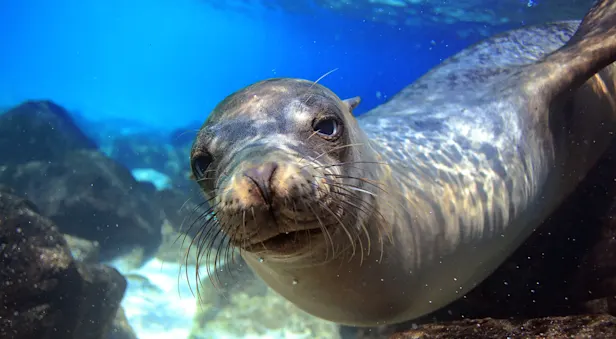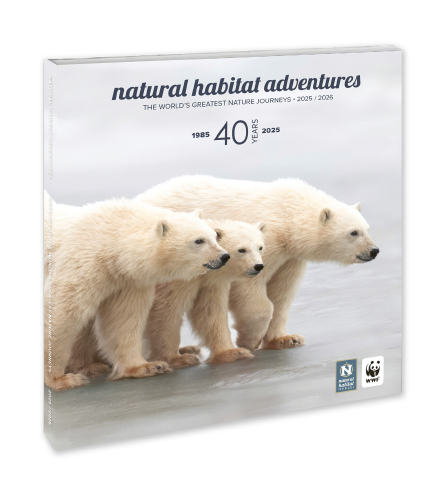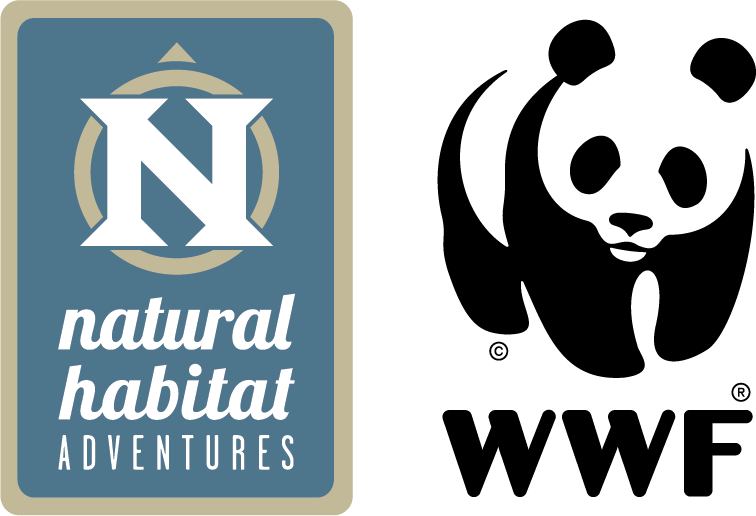Know Before You Go
Galapagos Whales & Dolphins | Galapagos Wildlife Guide
Approximately 24 different species of whale inhabit the abundant waters of the Galapagos Marine Reserve. It’s likely that more species are present but have yet to be positively identified. Whale watching in the Galapagos is a year-round activity, though the cooler months (July through November) are generally considered the best time to see whales. Whales are more commonly spotted in the western waters of the archipelago, between Isabela and Fernandina islands in particular. Many species, such as the Sperm and Bryde’s whales, the orca, and common and bottlenose dolphins are present year-round, while others, such as blue and humpback whales, are seasonal visitors.
Cetaceans are divided into two major groups: baleen whales and toothed whales. Baleen whales are generally larger than toothed whales and feed by filtering water through their baleen—a bristly structure in the whale’s mouth made of keratin (the same substance that makes up human hair and fingernails). A baleen whale feeds by opening its mouth and taking in water, which is expelled through the baleen, trapping small animals such as krill and fish. Species of baleen whales found in the Galapagos include blue whale, Bryde’s whale, humpback whale, minke, and sei. Toothed whales, including dolphin, porpoises, and orcas and sperm whales hunt for their food and may feed upon fish and squid (dolphins and porpoises), marine mammals such as sea lions and fur seals (orcas) and giant squid (sperm whales).
Baleen Whales
Blue Whale
Blue whales can reach nearly 100 feet in length and weigh close to 200 tons (or about the weight of 35 elephants), making them the largest animal in existence and the heaviest animal to ever have lived. They are regular visitors to the Galapagos and can be identified by their huge tails, which can be up to 25 feet wide, their mottled blue-gray color, and relatively small dorsal fins.
Bryde’s Whale
Bryde’s whales are the most commonly seen baleen whales in the archipelago. They can weigh up to 44 tons and can be identified by their blue-gray backs, pointed, crescent-shaped dorsal fins and narrow spouts—the cloud from which can reach up to 13 feet high.
Humpback Whale
The humpback whale, which can weigh up 45 tons, is perhaps the easiest whale to identify and one of the most fun to watch. Their dark-blue or black bodies are covered in barnacles, and they like to “spy hop” by raising their heads out of the water to look around. They also breach frequently.
Minke Whale
The dolphin-shaped minke whale is the smallest baleen whale, weighing in at 8 to 10 tons. It has a pointed head, sharp snout and white patches on its flippers. The fin and flukes are only visible when it breaches.
Sei Whale
The Sei whale can be identified by its long, slender body, dark, steel-gray skin and tall, pointed dorsal fin. It feeds close to the surface and, unlike many other species, does not arch its back or show its flukes when it blows.
Toothed Whales
Orca
You can’t misidentify this big predator, which has distinctive black-and-white coloration, a powerful stocky body and a tall dorsal fin that can reach up to 6 feet in height. Weighing in at up to 11 tons, orcas hunt dolphins, fur seals, sea lions, penguins and even other whales.
Short-Finned Pilot Whale
This almost all-black whale is sometimes seen cruising in groups of 40 or more individuals. It has a large, bulbous forehead and a long, back-curving dorsal fin and weighs 1 to 3 tons.
Sperm Whale
The sperm whale is the largest of the toothed whales and the world’s largest carnivore, weighing in at up to 45 tons. It has an enormous, square head and steel-gray corrugated skin that is often covered with big circular scars—souvenirs from tangling with its favorite food source, the giant squid. It is rare that visitors to the islands have an opportunity for an up-close encounter with a sperm whale since the whales make frequent, long, deep dives as they feed, but it is not uncommon to see a sperm whale’s spout on the horizon or its giant belly rise to the water’s surface in the distance.
During the 1800s, sperm whales were hunted to the brink of extinction because of the demand for whale oil. The upwelling waters around the islands provide optimal feeding grounds for these marine mammals, and they were killed by the thousands here. However, once people began extracting oil from the earth, sperm whales were spared, but the whaling industry left its mark on the Galapagos Islands.
Dolphins
Bottlenose Dolphin
While not native to the Galapagos, the bottlenose dolphin is a frequent visitor to the islands and the most commonly seen cetacean in the Galapagos. They have short beaks and curved dorsal fins, and their backs and sides are dark gray or black, with paler skin underneath. They often travel in large pods and can sometimes be spotted playfully riding the bow waves of ships and yachts. They can appear any time our boat is moving and often put on whimsical shows that delight travelers. Their distance from the boat varies: some will frolic right alongside the vessel, others will dance near the bow, while still others will execute flips off on the horizon. If you spot them at night, the swimming dolphins cause the ocean to shimmer with bioluminescence as they churn up thousands of miniscule phosphorescent organisms that glow when disturbed. An encounter with these highly intelligent cetaceans is one of the highlights of any Galapagos adventure.
Common Dolphin
The common dolphin looks similar to the bottlenose but has a longer beak, gray flank markings, an upright dorsal fin and a dark stripe that runs from the flipper to the chin.
Striped Dolphin
This striking creature is seen less often than bottlenose or common dolphins because it rarely bow rides. It is smaller than the bottlenose and larger than the common dolphin and can be identified by its more rounded dorsal fin and distinctive color pattern consisting of bold, thin stripes.Header Credit: Roberto Plaza
See Dolphins & Whales on These Galapagos Adventures

Galapagos Discovery: The Nat Hab Experience
Small-group adventures aboard your choice of private yachts, led by our outstanding naturalist guides and photography pros. Snorkel and swim with sea lions, sea turtles and penguins on this incomparable nature odyssey.
























